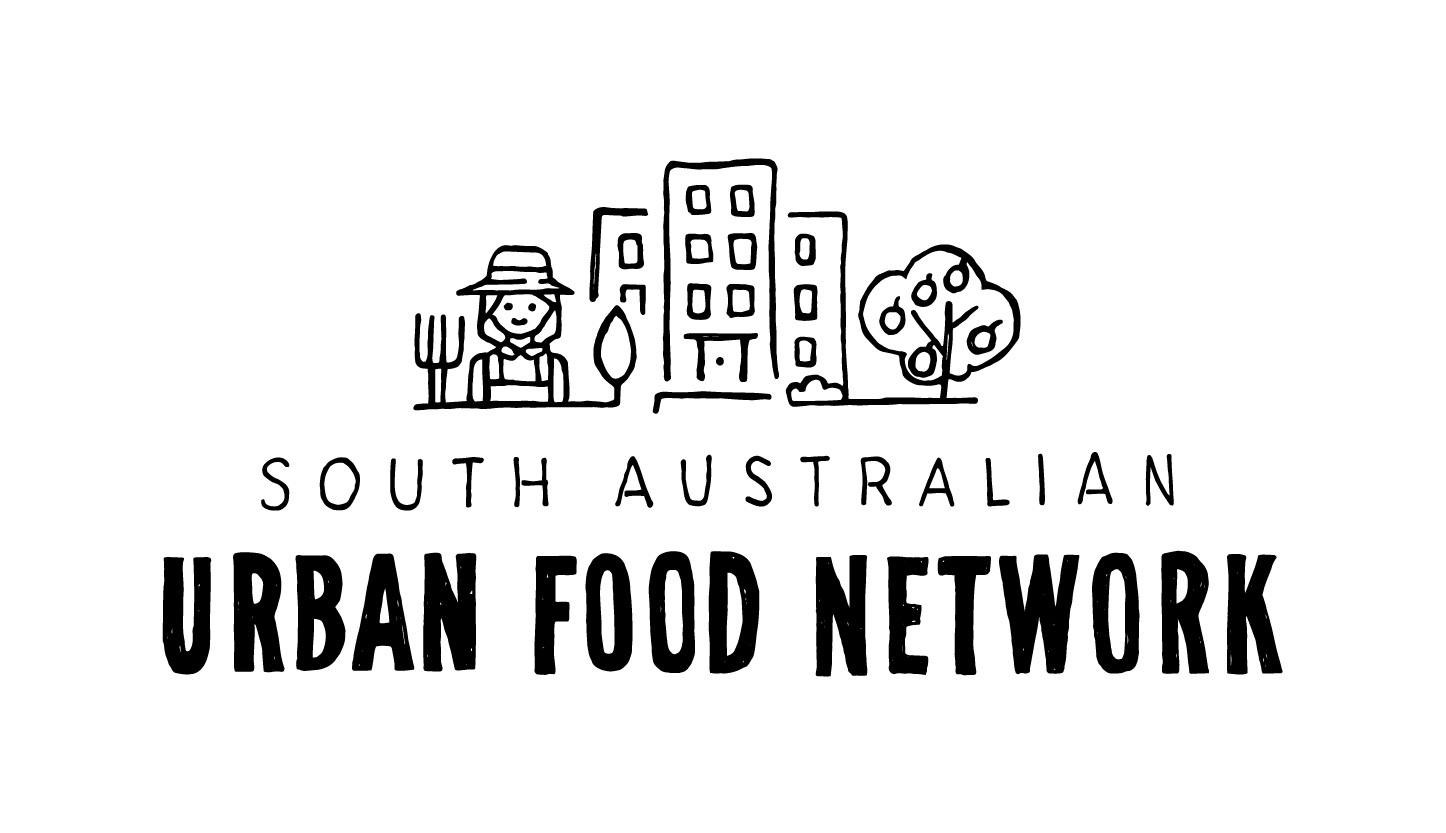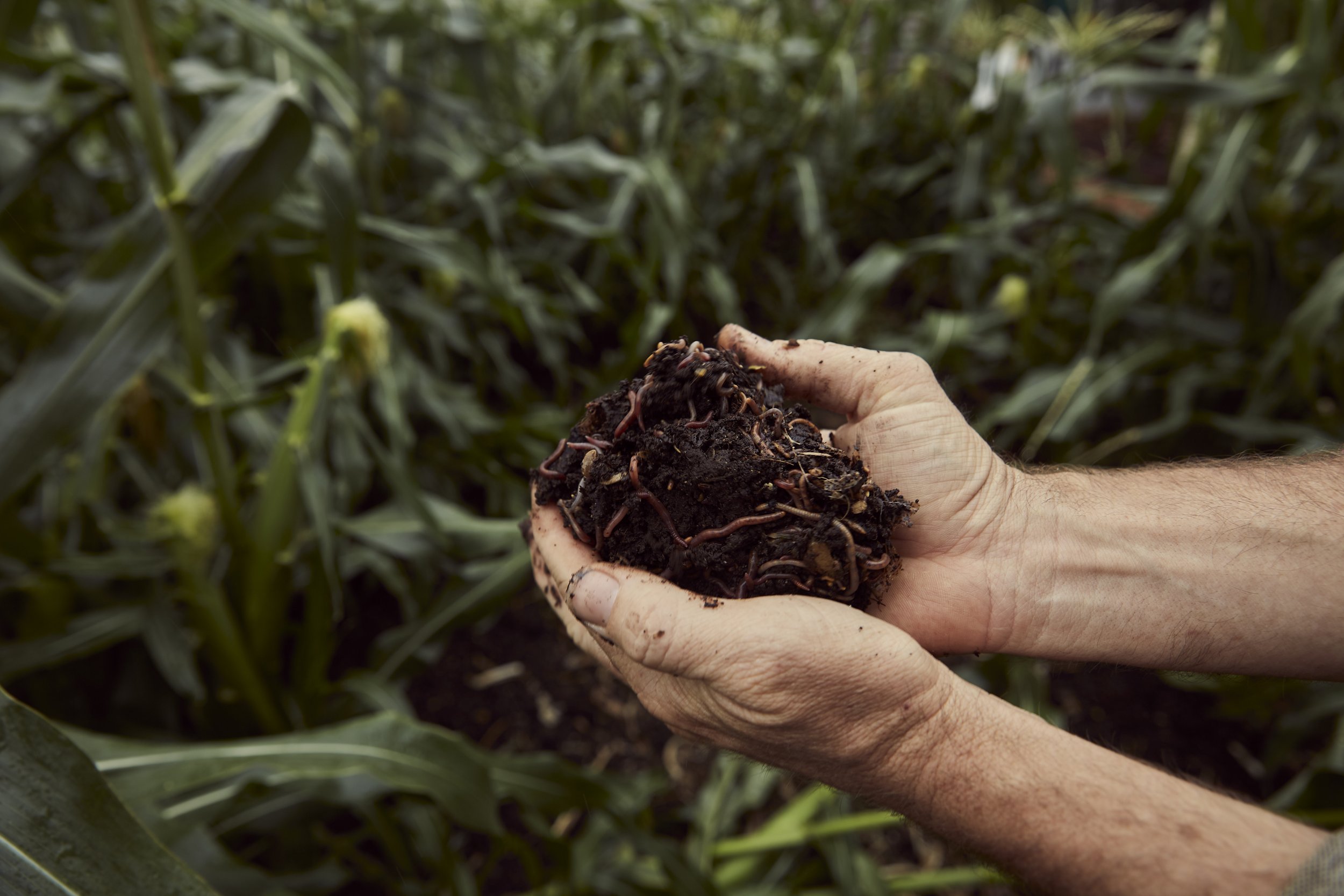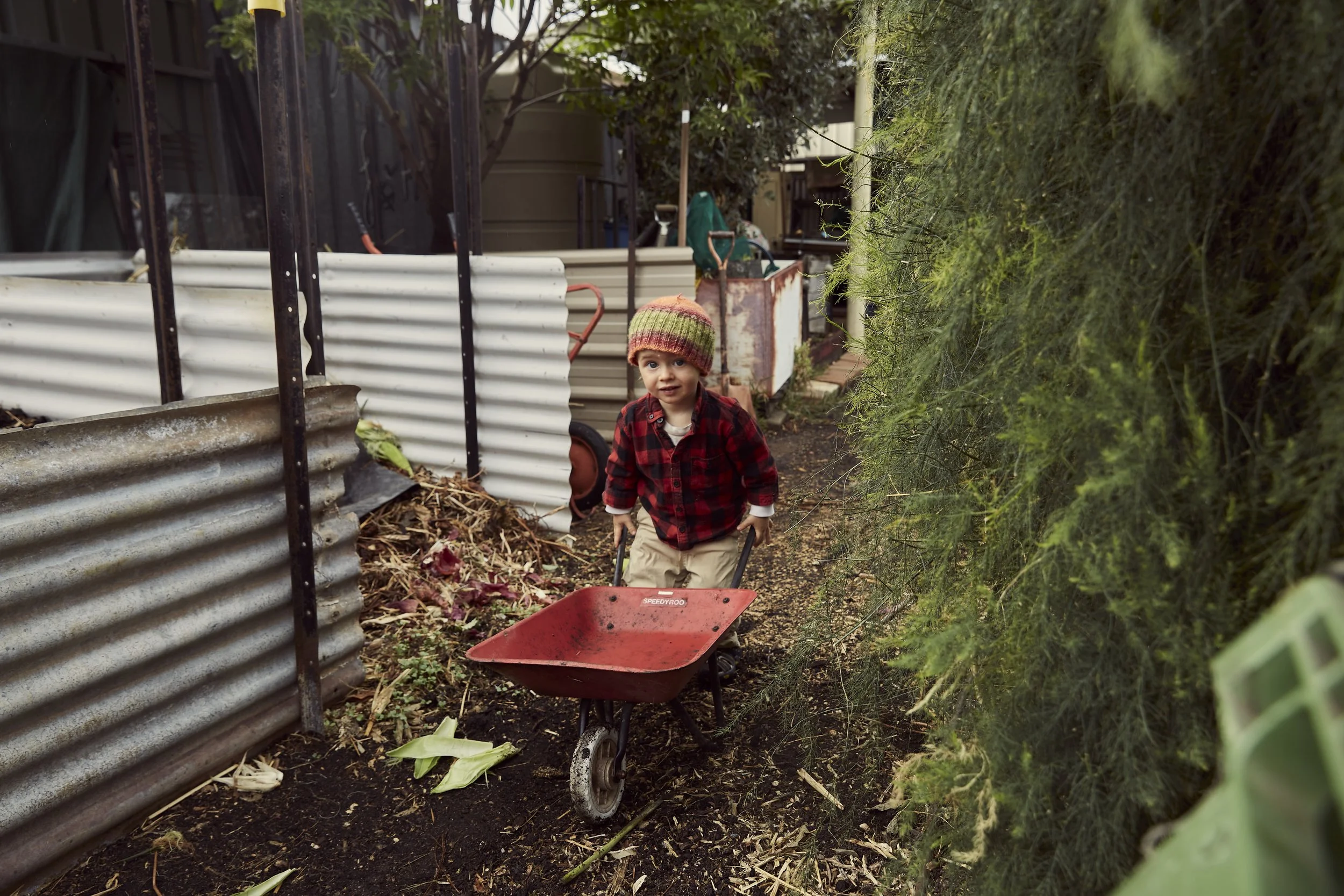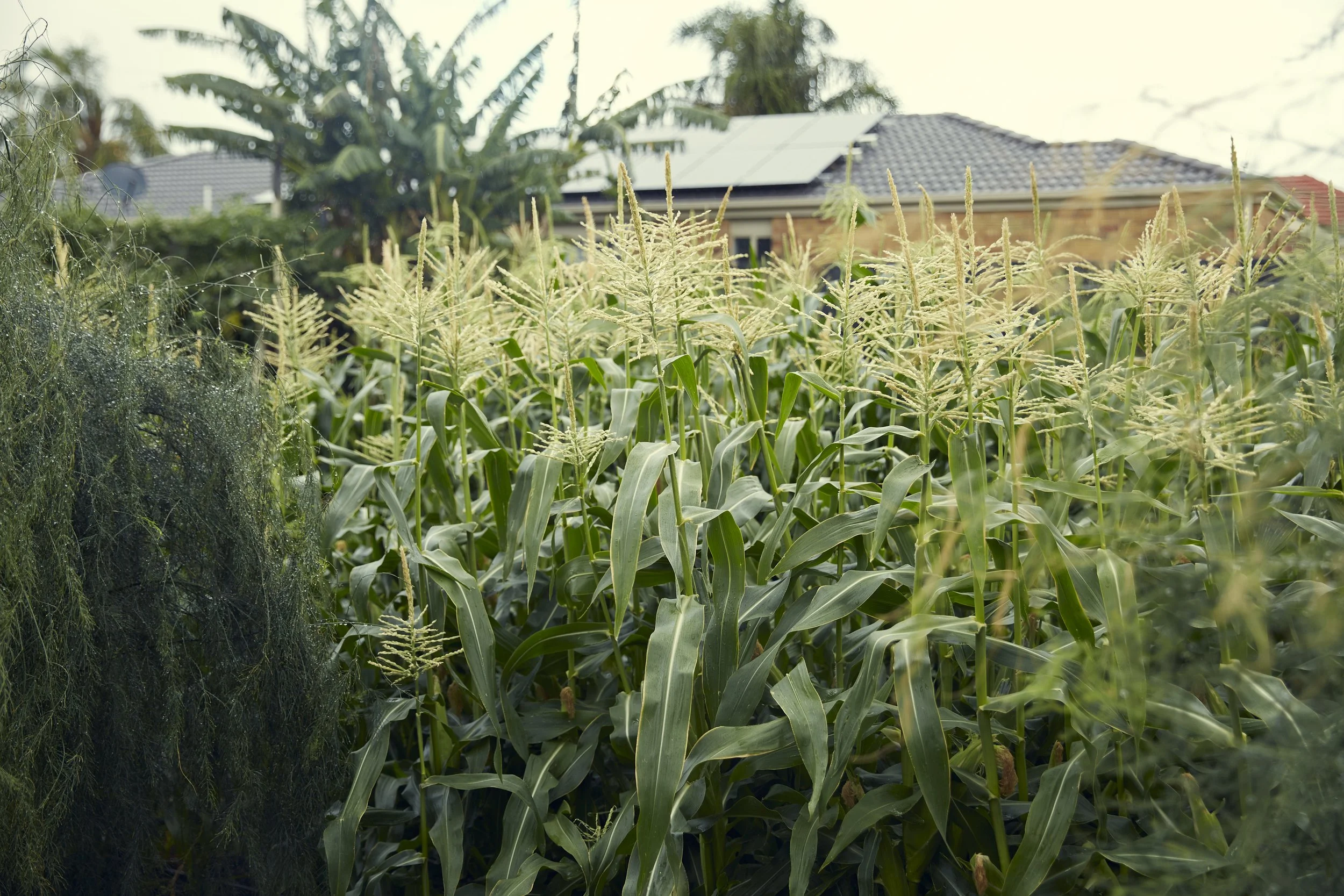Wagtail Urban Farm – Mitchell Park, Adelaide
On the Sturt river flood plain, we visited Mitchell Park to find Adelaide’s first urban farm. Steven Hoepfner has managed the farm alongside a small, dynamic team since 2013. We pinned Steven down for a hot minute to have a chat and learn more about the place affectionally known as, Waggie.
The key stats
Year established: 2013
Location: 2C Thirza Ave, Mitchell Park
Land size: 230sqm with 180sqm under bio-intensive cultivation
Water: Mostly mains with rainwater for seeding and usually water comes in around $300 a quarter
Energy: Sun power and people power
Soil type: Alluvial soil and beneath that – clay
Capital: Approximately $7000 to start, which got the compost, fertiliser and water. Rent is free
Labour: Steven spends around 6-8 hours a week and so does Ash, his cousin and any other volunteers that come through the gate on Thursdays
Main production: Market veggies
Suppliers/Inputs: Primarily, Marion Sand and Metal – then Steven makes his fertiliser himself
Markets: Mostly locals, advertised via social media
What’s the project, in a nutshell?
Put simply, Wagtail is a micro-urban farm where great food is grown and supplied to equally great locals.
At peak production, Wagtail can grow enough fresh produce to feed eight families a week!
Steven, the farm coordinator, first started working at the block in 2012.
“In June 2013, I was joined by Brett Young and Nat Wiseman and a couple years after, Nat moved on to form the excellent Village Greens of Willunga Creek, which is a one-acre market garden.
Since then, Steven’s had many people weave in and out of the fabric that makes up Wagtail.
His partner, Carla is a mastermind behind the scenes and helps especially with videos, editing, promotional material. Ash, Steven’s cousin, can almost always be found at the farm with Steven and sets the scene with the omnipresent radio – classical tunes only.
Of course, we can’t forget the landlords who have provided the land, free of charge. They bought the land to support their son, who will be able to build a home when he needs – but he’s only 8 or so at the moment.
“The owners give us use of the land in return for us looking after the space.”
The purpose of the garden has taken different forms over the years, but the core purpose has stayed the same: to grow healthy, local, nutritious food and provide a working model for others to do the same.
The dream was to see every urban block with an urban farm so that food could be produced hyper-locally.
Wagtail is an enduring example that the dream is possible – we just need more farms now!
In the meantime, Wagtail serves as an inspiration to aspiring urban foodies and growers.
“People can walk by, drive past, community or council groups can visit and everyone can be inspired to grow.
“I always imagine that it’ll be busloads of people coming by, but it’s usually just one or two people – then I realise that those one or two get deeply impacted and that impact spreads out.
“My expectations and my reality are not the same but at the end of the day even just one more person growing food is a win,” says Steven.
Steven offers a point of contact for the community to drop in if they want to learn how to grow their own food or take their food growing to the next level.
Over the years, with baby Wynn being born along the way, Steven has gradually shifted more of his attention to education and now spends much of his time speaking at workshops, on radio and having conversations with volunteers who are eager to learn.
Prior to Wynn, the crew didn’t make a living wage form the farm. In fact, at peak production they were making $9 an hour.
“I don’t try to make a living out of it anymore, it all just goes back into the farm.”
“When you’re working all day for a handful of veggies it doesn’t really make economic sense but you’re getting way more than a handful of veggies.”
People always drop in to lend a hand, sit down for a chat and work together, there’s a definite sense of connection over growing food.
Plus, lunchtime chats at the farm often take numerous tangents, leading to conversations anywhere between bike mechanics and home-made veggie fertiliser to how the pyramids were built.
“I don’t make much money but I feel like I’m rich,” Steven says.
How did this all get started?
It’s a good story and it’s all organic.
Steven says he started growing stuff years ago when birdseed was accidentally spilt onto the lawn at his rental unit in the Gold Coast – “corn seeds sprouted from the mishap.”
The garden-bug took hold and Steven dove down the rabbit hole to find out how the corn grew, why and how to grow more.
“Two decades on, I still get a kick out of every seed that germinates.
“There’s a pure joy in witnessing that transformation and then knowing the food is nourishing people’s bodies and lives.”
Thinking back to this time, Steven says his eyes were opened to the way the world operates in terms of our food production.
“Every issue I see around the world comes back to food security so it’s the best use of my time,” says Steven.
This understanding found Steven working towards increasing his own food production and eventually helping others to do the same.
Steven started out working as a handyman, doing odd jobs for people around Adelaide.
“I slowly sold off my handyman tools and started buying gardening tools instead,” Steven says.
Fast forward and now Steven works full time work as an “edible landscaper,” visiting people’s homes and assisting them in planning and maintaining edible food gardens.
In a sound bite the business is, “helping people create nice looking gardens with high food production values.”
It was actually some clients of Steven’s that helped get the ball rolling with the urban farm plan – Beth and Ray, who started the marvellous Sustainable Communities SA.
Over morning tea, momentum struck! Beth knew someone who had land – an essential but difficult component to starting a farm.
The Autumn rains had started and up grew a soft covering of wild oats across the site but for now, Steven started storing compost with no concrete plans to farm.
Steven had met small group of people also interested in starting an urban farm in Adelaide at a talk with American urban farmer, Michael Ableman – that’s where he met Nat Wiseman.
So after a phone call to Nat, the duo teamed up formed the plan that would guide Wagtail’s creation.
Any tips for those wanting to do something similar?
Steven is that he doesn’t want you to forget about the soil – “Learn what makes good soil and what goes into soil.”
Steven says he’s still learning about this too but there were lots of things that helped along the way and connecting with other growers in the area is a great way to speed up your education.
“I made friends with compost manufacturers! Matt Quinn from S.A. Composters would often call past and often drop hints.”
Getting connected and working with others is important but Steven also has some advice on this.
“I love the saying – “unspoken expectations destroy relations” and it took me a while to learn this.”
Steven’s also given us a list of essential reading:
Mycelium Running, Paul Stamets (Steven says this one blew him away and changed the way he thought about soil and fungi interactions)
The New Organic Grower – Elliot Coleman
The Complete Book of Vegetables, Herbs and Fruit in Australia – Bob Flowerdew, Matthew Biggs and Jekka McVicar (Steven referred to this as his Bible. It’s the book he refers to the most and it stays in the car like a well-read road map)
And the final pearler, “Don’t be a cheapskate with water.”
What’s been the biggest challenge so far?
Getting the produce to whoever wants to buy it was a big challenge.
Wagtail started off selling at the farm gate and at markets twice weekly, then once weekly, then once monthly.
Now they mostly have customers pick up a few things on Thursdays or advertise on Facebook for pickup from Steven’s home.
“We eventually found a new avenue, but I’ve also had a crate of leeks sitting at home for three weeks, so it doesn’t always work.”
In this sense, it’s good to be prepared from some wastage, but then wastage also comes about with increasing climate variability.
Sometimes seasons come late and other times they don’t come at all. One solution is to frantically plant something else.
“Pull out something that isn’t a valuable crop to make space for the next stuff.”
Steven adds that this puts all the crop rotation out of whack, of course.
Climate change will bring about more seasonal uncertainty and finding sustainable options to cope can be difficult.
Growing things like tomatoes can be a struggle in scorching summers if, like Steven, you don’t want to rely on plastic shade cloth.
Steven says that adaptation will be essential moving forward.
“I have a friend who has been breeding plants that are resistant to heat.”
Each year his friend cultivates and saves seeds so with each growing season the crop is better suited to its niche climate.
Another challenge is of course, finding land.
However, Steven says finding land is a real issue with a simple solution.
There are heaps of vacant blocks across our urban environments that legally need upkeep. A landholder is obligated to keep the land free of weeds because then it’s a bio and vermin hazard.
So the solution? Have urban farmers steward the land!
“There are people everywhere looking for spaces to grow on and there are people with the land – it’s a match made in heaven.”
But what would it take for people to realise the relationship?
“I think councils and government would need to get involved. There could be a database for people offering land and then people or groups could approach landholders with their idea.”
What’s the best part?
Steven says it’s simply watching the plants grow.
“I know it sounds crazy but I just love it. I love watching the succession over the season, like with the corn planting.”
It’s the simple pleasures of watching little willy wagtail catch bugs and being apart of this ecosystem.
“Nature is defiant to the manmade world, it keeps rolling with the seasons and I like being a part of that.”
Connecting with passers-by is another gift.
Often retirees stop by for a chat, or locals who don’t speak English, but there’s always a connection made and produce taken home to their dinner tables.
It also gives Steven a chance to steal customers on their way to Coles down the road. Why keep walking when you can get your veggies fresh from the farm?
“I forget that there are beautiful moments, but there are some small moments almost every day,” Steven says.
“I wouldn’t be doing anything else.”
Tell us about the future - what’s next?
Steven sees himself continuing to work towards a more regenerative and local food system in Adelaide.
He imagines endless environmental benefits if more of us could start growing our own food and rely less on large scale farming.
“Many people don’t know what SA was like prior to industrialised grazing and soil depletion from farming,” Steven says.
In many ways, Steven wants our natural systems to return to what they would have been like before this time – less pollution, clean waterways, less export and import, and more biodiversity.
Is this possible though? Steven thinks so.
In the meantime, Wagtail will stand steadfast.
“I might not be here for the next 10 years but Waggie will be handed over willingly to the next caretaker.”
Ideally, Wagtail will increase its capacity as an educational hub, and with potential support from council, could be run as an urban farm display with opening hours and paid educators.
Until then, Steven will be there, gates open on Thursdays, with knowledge to share with whoever seeks it.







